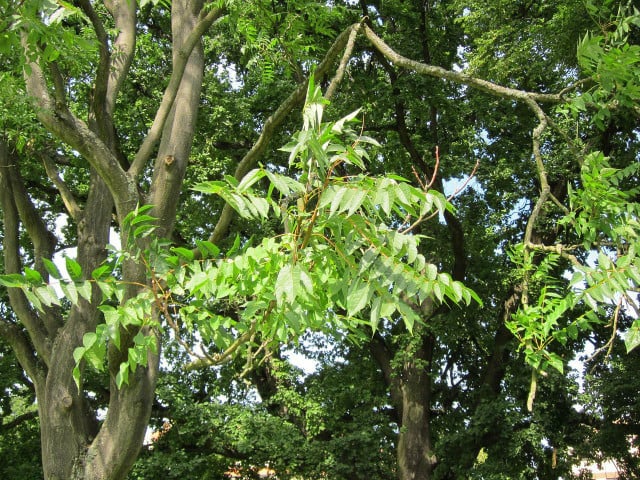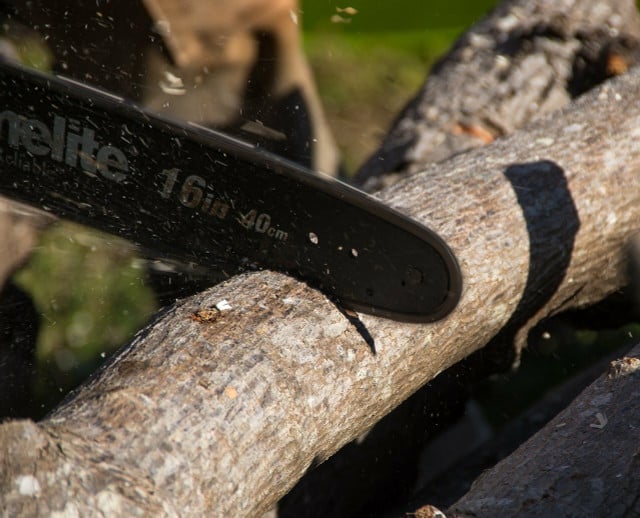Despite its name, tree of heaven is of the most aggressive invasive species across the USA. Read on for tree of heaven identification and removal tips.
Before tree of heaven identification, it helps to know why this plant is such a pest. Also known as Ailanthus Altissima, tree of heaven was originally brought over from China as an ornamental plant and has rapidly become invasive in much of the continental USA. Here is what makes Ailanthus such a problem:
- Tree of heaven grows incredibly quickly and will block out sun from native plants.
- It reproduces widely through seeds and via root sprouts, often forming thickets of cloned trees.
- Tree of heaven produces a toxin that inhibits growth of other plants up to five meters from the trunk.
- The tree only lives for 30 to 50 years and has thin, weak branches; this makes it more likely to collapse from age or storms than other trees.
- Because it is non-native, it has fewer natural diseases, pests, and predators to control its growth.
- Cutting Ailanthus causes it to rapidly sprout from its roots, potentially creating an even bigger problem than the original tree.
- Tree of heaven is the preferred host plant for spotted lanternfly, an invasive insect that ravages agricultural plants such as grapes, apples, and hops.
If you are worried about the invasiveness of some commercial plants, consider native gardening for wildlife as a way to use local plants to support a healthy ecological community.
Tree of Heaven Identification: What to Look For

(Foto: CC0 / Pixabay / WikimediaImages)
With the threat that it poses to both the environment and the plants in your yard, proper tree of heaven identification is vital to save yourself from a potential Ailanthus infestation. Here is what to look for:
- The location is now all over the continental USA in areas of full sun, but is more often found in populated areas or where the soil has been disturbed, such as roadsides, train tracks, parks, or lots.
- The trunk is usually under three feet in diameter with furrowed greyish bark that is smoother at the branches.
- Leaves are pinnately compound (like a palm tree) with multiple leaflets running down a central reddish stem.
- Flowers form as cream-colored inflorescences on upright stems.
- Seeds are “helicopter-shaped” (like a maple) and form in large, reddish clusters.
- The odor of the entire tree (but especially the flowers) is often compared to “rotten peanut butter“, which is why it is also called stink tree or stinking sumac.
Removing Tree of Heaven



(Foto: CC0 / Pixabay / sandid)
After successful tree of heaven identification, you may want to remove the tree before it matures, spreads, or harms your other plants with its toxins. Though it may take time, here are some strategies for keeping an infestation under control:
- Digging it out is the best solution for sprouts and younger trees because it quite literally addresses the problem at the root.
- Cutting the tree is often a necessary first step to prevent Ailanthus from producing seeds or absorbing sunlight as fuel. There has to be constant monitoring however, as the tree will rapidly sprout along its stump and roots as far out as several dozen meters. Regular mowing of these sprouts will eventually weaken the root system. Be careful when felling a full tree, as the branches may shatter when hitting the ground.
- Herbicides carry the risk of harming nearby plants, but are often a necessary evil in killing Ailanthus. Immediately after cutting down a tree (within 5 minutes, before the tree seals its wound), apply herbicide to the cut surface. While this is not guaranteed to kill the tree, it weaken it enough to minimize re-sprouting. In lieu of sawing the entire trunk, you can also hack at the base to make several cuts to apply the herbicide, which will then get absorbed into the roots. As an alternative to commercial herbicides, consider homemade weed killer from organic ingredients.
- Shading: Since Ailanthus is highly shade-intolerant, one way to prevent growth is by encouraging native trees to grow and produce shade once the tree is cut. Alternatively, you can cover the stump with a dark tarp, though Ailanthus will usually re-sprout too rapidly for this to be effective.
- Reporting: Because Ailanthus hosts the highly damaging spotted lanternfly, the USDA provides reporting resources to keep track of and remove this tree.
Read more:
- Carolina Silverbell: All You Need to Know About This Native Plant
- Removing Moss: How to Kill Moss in Your Lawn
- Edible Weeds: 9 Common Weeds You Can Eat
Do you like this post?







